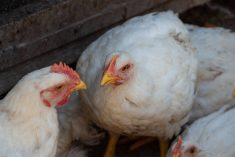While Alberta’s fall surveillance program for chronic wasting disease (CWD) in wild deer has turned up fewer cases than last year’s, deer with the disease were found further south and west than previously detected.
Hunters have submitted more than 4,800 wild deer heads for testing since Sept. 1, 2009, the province said in a release Friday. Of the 12 new cases of CWD identified, 10 were detected near past positive cases.
One new case, however, was detected south of Highway 1, 25 kilometres south of Medicine Hat. Another case was found just east of Highway 884 along the Red Deer River.
Read Also

Klassen: Feeder market sees wide price range
For the week ending December 13, Western Canadian feeder cattle markets traded $10 higher to $10 lower compared to seven…
The 12 new cases, along with an “emaciated” deer found in June, bring the total to 13 new cases of CWD found in 2009, down from 25 in 2008. Since the first case of CWD was found in the province in 2005, there have been 74 cases in Alberta’s wild deer.
Eleven of the 12 new positive cases from the fall program were mule deer and nine of the hunter-killed cases were adult males, including an adult male white-tailed deer, the province said.
Current strategies for monitoring the spread of CWD include “maximizing the harvest” of deer in risk areas and continuing the testing program. The province has run ongoing surveillance in elk and wild deer since 1996.
The province’s surveillance program includes testing roadkill and any wild deer that may show CWD symptoms, such as loss of co-ordination, weight loss, excessive salivating and isolation from other deer.
The province’s sustainable resource development ministry said it “continues to talk with stakeholders and landowners in the area to discuss plans for management.”
According to Saskatchewan’s environment ministry, CWD was unintentionally introduced into farmed elk population taken from South Dakota and has since been introduced to Saskatchewan, Alberta and Korea. The economics of trade in live elk and their products, such as antler velvet, has been affected as a result.
Because CWD belongs to the group of transmissible spongiform encephalopathy (TSE) diseases along with BSE in cattle, scrapie in sheep and Creutzfeldt-Jakob disease in humans, the association has led to possible public health concerns — although there remains no scientific evidence that CWD can infect humans.
The disease can be transmitted from one animal to another, mainly through contaminated saliva or contaminated feed and water. Infectious material can survive in the environment for an unknown period — at least three years, the Saskatchewan government said.
CWD has also been found in three isolated geographic areas of Saskatchewan’s northeast, northwest and southwest.













